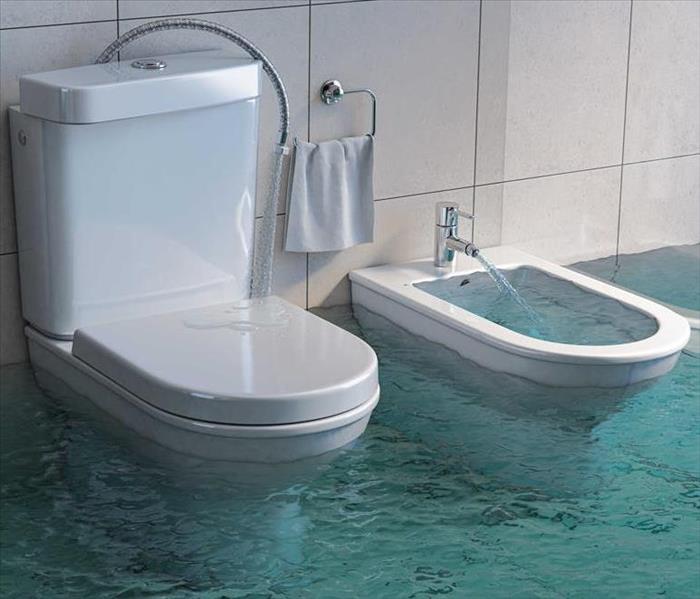Does Your Toilet Overflow When You Run the Shower? Clean the Mess With These Sewage Cleaning Tips
6/17/2022 (Permalink)
When sewage lines become clogged, the obstruction prevents the fluid from moving through the pipes. It builds up, escaping from the nearest outlet. Sinks and toilets offer the most viable openings, so when you step into the shower and the plumbing is blocked, the water is likely to pour out of the toilet, leaving owners to handle sewage cleaning.
How To Manage Toilet Overflows and Sewage Cleaning
As a homeowner in Sandy, UT,, you need to protect your house and seek professional help for clean-up procedures. With a few tools and expert assistance, your shower and toilet can function correctly again. The following are three essential tips to follow.
1. Locate the Clog Causing the Toilet Overflow
Turn off the water to the immediate area. You don't want another overflow to occur while hunting down the source. Then, move from one location to another to find the blockage. The following are possible zones of trouble. Check each one to ensure that you catch any concerns.
- Drain Cleanout
- Outside sewage pipes
- Commode
Plungers work well for smaller obstacles. However, this clog is likely larger and further down the plumbing. For more efficiency, control and force, use a snake. Begin with the toilet. The snake is a long flexible tube that can enter the lines. It has a crank that creates pressure to push the clog through. You can move through the various home openings, testing for concerns.
If you can't find the issue, move to the drain cleanout. It's usually located outside. Wear gloves and use the torque to remove the lid. You're entering the main sewer line, filled with microorganisms and waste. If you're reached this point, it's best to call in a water restoration company in Sandy, UT, to assess the trouble.
2. Tackle Outside Troubles
After a while, older pipes corrode, weakening your structure. Also, tree roots can grow into lines, leaving cracks and holes. These permit sand and dirt to collect, blocking movement. The specialists have high-quality video scopes to scrutinize the plumbing. They can clean the drain out and identify external concerns. In addition, they begin necessary repairs.
3. Start Sanitizing and Sewage Cleaning Procedures
Sewer water is a class 3 fluid, also called black water. It's not something you want to stick around in your home because it hosts bacteria and mold. The longer it lingers, the more contamination you face. Spores such as mold, for instance, migrate into your porous materials like drywall and flooring. Mixed with the water, they reproduce quickly, infesting places within one to two days. Therefore, immediately work with the remediation team to initiate clean-up procedures once you've located the blockage.
Have the team assess the clogged pipe aftermath, collect samples and take moisture readings. Attack the fluid. Dry out the impacted spaces using industrial dehumidifiers and air scrubbers. Discard porous, overly saturated materials.
Deodorize and treat the bathroom with antimicrobial cleaners. Then, rebuild and replace the space, returning it to proper working order.
Running your shower can trigger the toilet to overflow if you have a clog. Shut off the water and find the source. A team of water experts can assist in your trouble and begin critical sewage cleaning. Don't wait. It's imperative to improve fluid movement and sanitize the space.




 24/7 Emergency Service
24/7 Emergency Service
